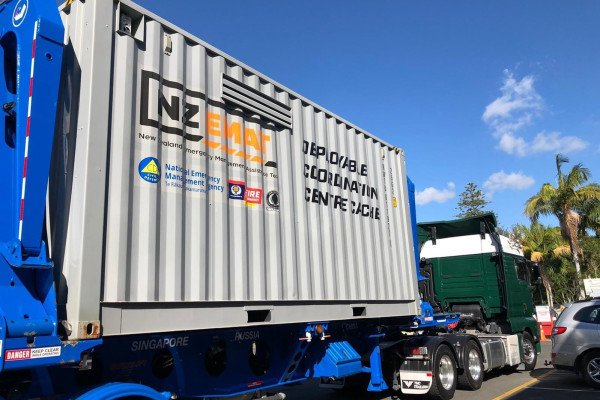Emergency Management
Civil Defence Emergency Management
The Civil Defence Emergency Management component of the Resilient Westport package is focussed on severe flood events. The package includes $500,000 to improve local civil defence capabilities.
The Project Lead’s work is guided by West Coast Emergency Management (WCEM) alongside the Resilient Westport Programme team.
They’re focussing on enhanced evacuation planning and improving arrangements that support evacuation activities. This includes:
reviewing digital systems for data management and sharing
additions to the pool of emergency management equipment and welfare resources
coordinated planning among critical infrastructure agencies and emergency services
community capability and resilience.
Community engagement on the work to improve Westport’s evacuation systems is an important part of this work.
Key to timely and effective evacuation planning is having good information about the nature of the hazards that might impact on Westport – as much in advance as possible. The West Coast Regional Council has worked to improve monitoring around the area since the floods of 2021 and 2022. Regional Council’s work, with Resilient Westport funding, on initiatives like deploying the ocean wave buoy off Westport is part of improving the information available for flood and weather modelling. The wave buoy was damaged last year but was recently replaced.
In addition, a water level recorder was installed on the Orowaiti Bridge in 2024 and another at the Buller Bridge at SH76, with a final site to be installed in the Buller River at White Cliffs.
Containerised resources like the caches shown here will be used as possible alternate Emergency Operations Centres (EOC). Each costs about $30,000 and are equipped with essential supplies, equipment and communications tools that are crucial during emergencies.
What’s happening now?
The current focus of the project is on evacuation planning to:
Identify key information required to determine the appropriate level and timing of a flood-related evacuation response
Guide effective engagement and public communications about the evacuation
Provide estimates of the numbers of evacuees in different categories and the varying levels of support they may require.
Indicate the locations where information will be collected (evacuee registration centres)
Outline the process of getting people at risk to a safe place
Support the identification of evacuees requiring additional support.
The first part of this work involves discussions with key external stakeholders, including partner organisations that will be involved in maintaining and implementing the plan. This is essential to test the validity and practicability of the planned approach and to identify any gaps that might need to be filled.
Community engagement on the work to improve Westport’s evacuation systems is an important part of this work. The next step will be engaging with the Westport community in a way that helps establish what their needs might be in an emergency. I.e do they view themselves as being able to transport themselves to a safe place in a flood situation, do they have a household plan, have they considered where they might go if evacuated? If someone doesn’t feel they can manage on their own, then the team would like to get a feel for what their needs might be in terms of support.
THreE key components make up the emergency management work
better evacuation procedures
upgraded digital systems
coordinated planning amongst agencies
Building a more resilient West Coast in the face of hazards and adversity
-
We already have Civil Defence in Buller that is managed through West Coast Emergency Management Group (WCEM).
All four councils on the West Coast and iwi, make up the WCEM Group.
West Coast Regional Council
Buller District Council
Grey District Council
Westland District Council
Te Rūnanga o Makaawhio
Te Rūnanga of Ngāti Waewae.
The aim of the WCEM is to coordinate emergency management activities, mainly focussed on readiness and response.
As we saw in the flood events of 2021 and 2022 (and many other occasions), in an emergency WCEM sets up an Emergency Operations Centre (EOC) to oversee the coordination of agencies and communities involved in a response.
The operational direction of WCEM is provided by the four councils, Fire Emergency NZ, Police, Health NZ, Medical Officer of Health, St John, the Group Controller, Department of Conservation, Makaawhio and Ngāti Waewae. These agencies meet on a quarterly basis and make up the ‘Coordinating Executive Group’ (CEG).



